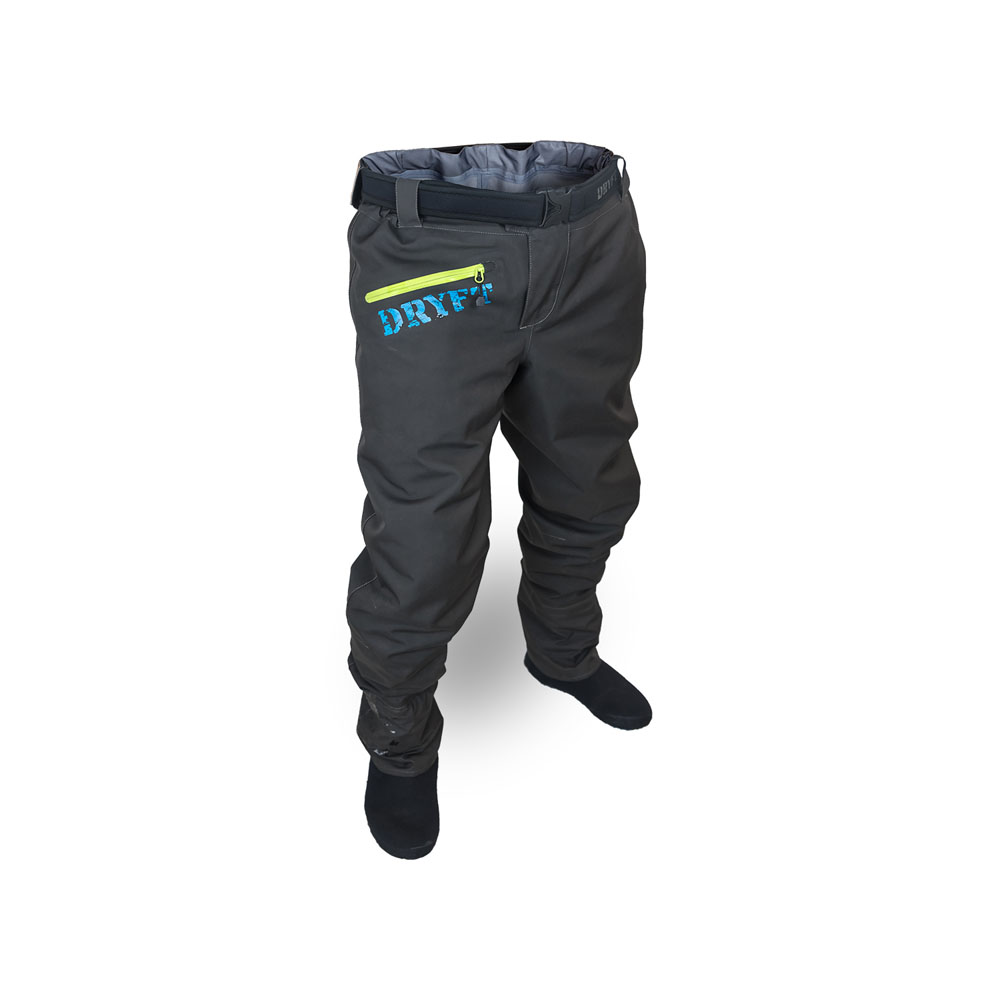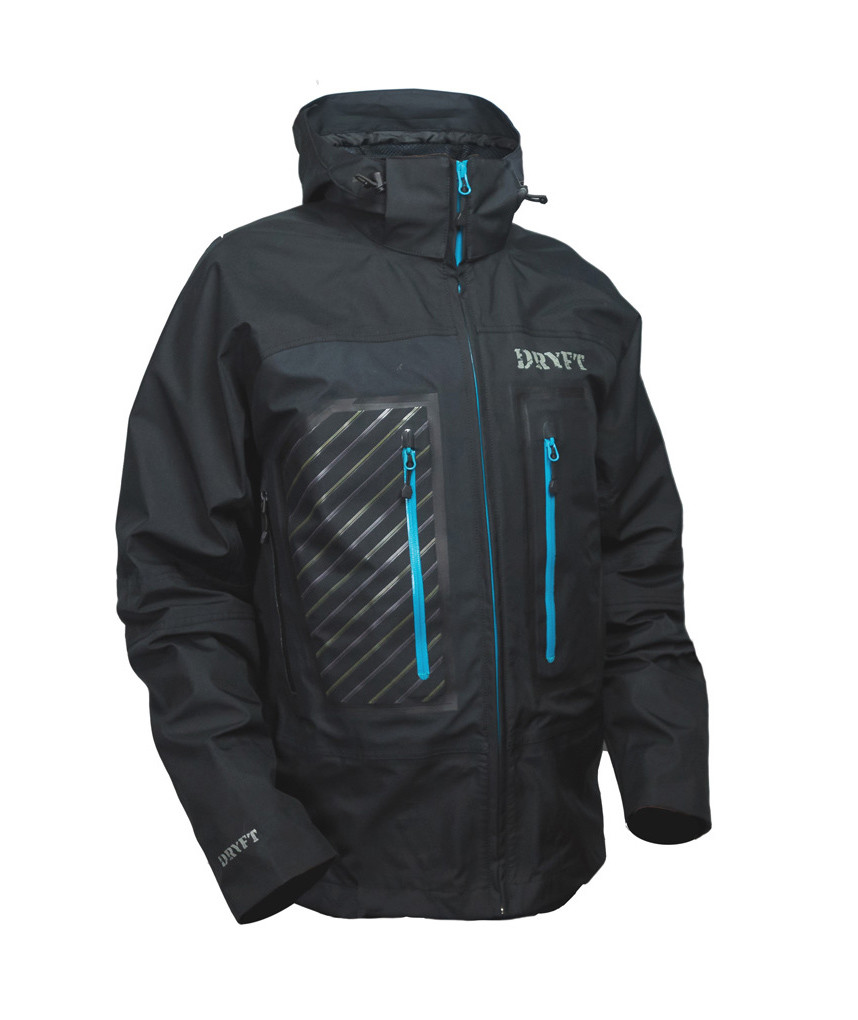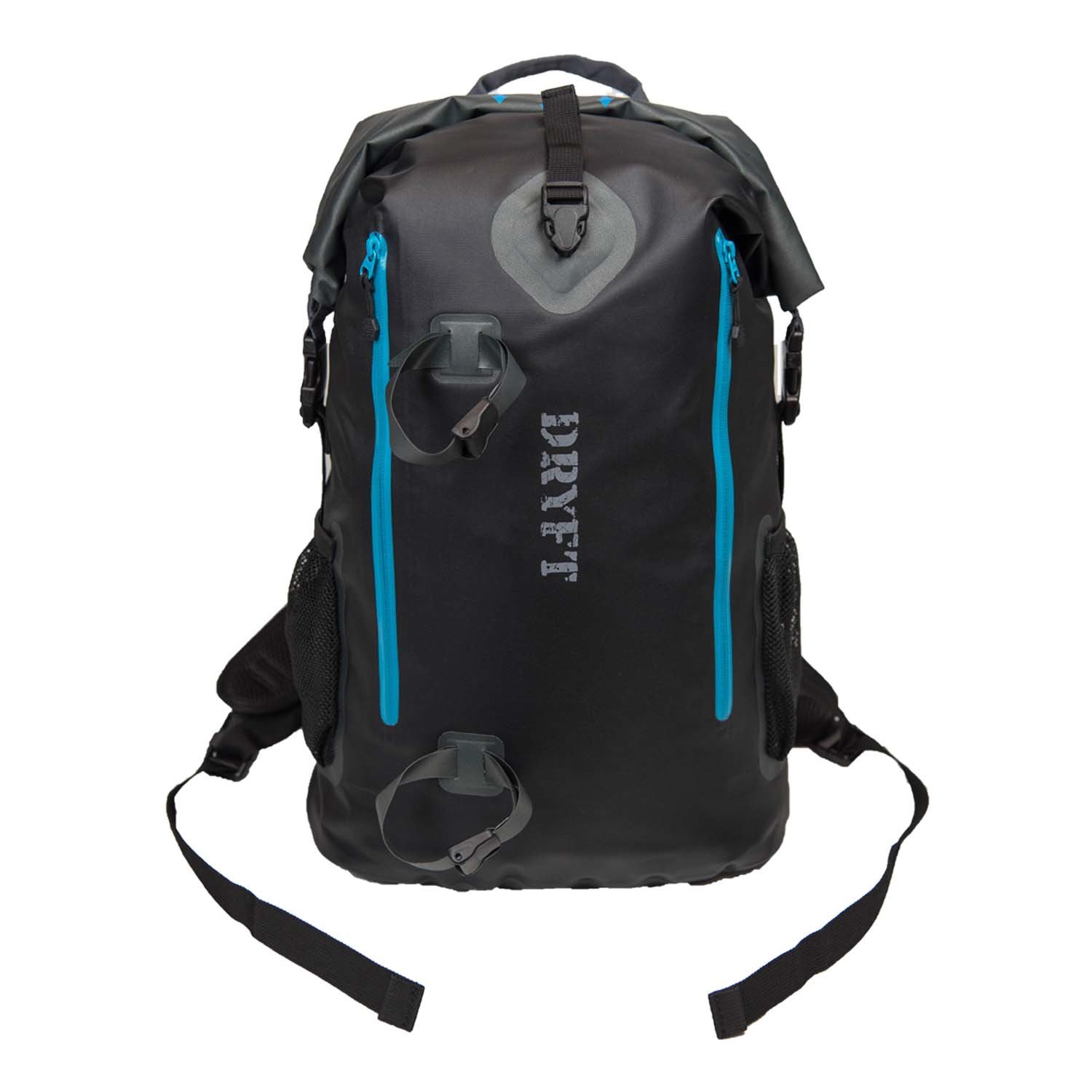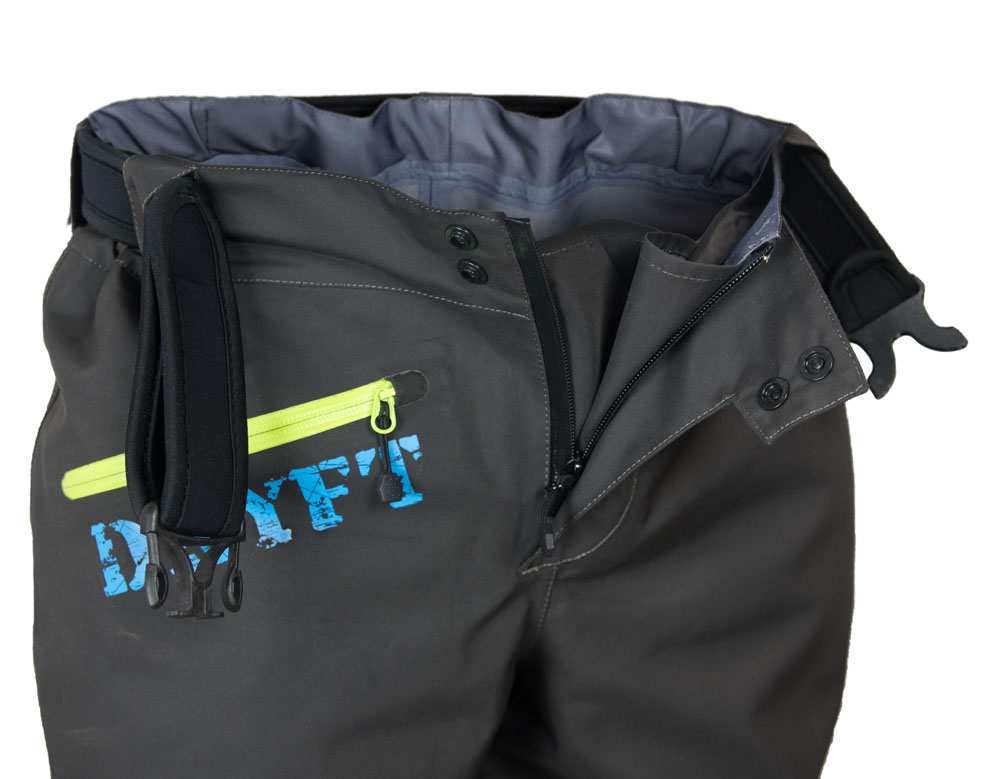We’re offering 10% off for the next three days with code STPADDY. Valid for 3 days only, March 17-19.

We’re offering 10% off for the next three days with code STPADDY. Valid for 3 days only, March 17-19.

Product video is here for the new BKCNTRY waterproof fishing backpack from DRYFT. So load it up, strap it on, and go for a long hike and fish.








So you just picked up some new breathable fishing waders, or you’ve had them for a while, and you want to make sure you get the most possible use out of them? You came to the right place to learn how to take care of your fishing waders. Doing just a few things will help prolong the life and performance of them.
Heads up: All of these tips apply to waterproof breathable jackets as well.
One of the main things you can do to prolong the life of your waders is dry them thoroughly, inside and out, between uses. Wet and damp waders stuffed in the trunk of your car or dumped on the garage floor tend to grow mildew, which breaks down materials inside and out.
Always hang dry your waders after each use, and not only will you avoid breakdown of materials but the wader funk won’t turn your head on a swivel next time you go to put them on. If there is any moisture from condensation on the inside it’s important to dry the inside as well. This is usually accomplished just by hanging them right side out in a cool dry place. In the winter time hanging them in a furnace room, or near a de-humidifier to dry is a good idea. Otherwise a cool, dry place with airflow works just fine.

How to wash your waders
We recommend hand washing your waders with some Revivex Pro Cleaner, or a mild soap, in cold or lukewarm water using a soft rag. This should work to clean as much of the dirt that will come off by hand and keep the waterproof fabric repelling water like it should. Hang dry until completely dry and then if desired use some DWR spray ReviveX on them. Nikwax and GearAid (maker of Aquaseal) make spray on DWR reviving applications for use after cleaning. The GearAid ReviveX Durable Water Repellent is a good product that does a great job of reinvigorating DWR coatings. You will want to clean up the waders as much as possible (hand wash) before using it and then just spray it on the surface fabric. ReviveX can be applied when the waders or jacket are wet or dry. Let it cure for 24 hours before use.
We don’t recommend machine washing waders. Our reasons are that we don’t like the possible abrasion and catching or bunching that could possibly occur during the cycle (this sort of depends on the machine type), and also don’t like to soak the inside seams with water.


Keep all zippers, especially waterproof models, clean and free of any dirt, oils, fishing line or other debris. Foreign matter caught in the zipper can result in damage which may not be covered under warranty. Keep it clean and never force a stuck zipper. If it sticks gently back off in the opposite direction if possible, then clean and lube the entire zipper thoroughly before using it again. We highly recommend using zipper protectants and lubricants such as Zipper Lubricant Stick and Zipper Cleaner + Lubricant to keep your zippers performing as they should for years to come. Use the snap at the top (if applicable) to take stress off and keep it from pulling apart while wearing.
When transporting waders in luggage or just back and forth during fishing trips, the safest way to transport is to roll them loosely from the feet up and pack them at the top of your bag with heavier items under them. If you have a waterproof zip front model, it is very important to unzip all the way before rolling or packing them. If the zipper is zipped and then folded it can create a crease that can cause the zipper to fail.
Those are the foundations of wader care and will help prolong the life and performance of your fishing waders.

The DRYFT Session wading pants are in stock and ready for action. Available in sizes small, medium, medium-long, large-short, large, large-long, extra-large and 2xl.
On the fence? Check out this video to learn about the features.

Stepping up from the original Primo wading jacket, the Primo Long Jacket excels at keeping you dry on those hardcore bad weather days. The Primo long fishing jacket is designed for wearing with waders, wading pants, rain pants or just by itself. If Chuck Norris was a fishing jacket, this would be it.
[button link=”https://dryftfishing.com/shop/primo-long-jacket/”]See full details[/button]

Check out the all new BKCNTRY waterproof fishing backpack. Available now. 
[button link=”https://dryftfishing.com/shop/bkcntry-waterproof-backpack/”]See full details[/button]








We’ve held our prices as low as possible since we began selling gear back in 2012, but with inflated cost of goods and rising overhead we need to modestly increase our prices.
To continue to serve our customers to the highest level with top notch customer service, offering free shipping on all orders (U.S. orders), low cost repairs, high quality goods at fair prices and continued innovation with new products (more on that to come soon) we need to slightly increase prices on the Primo line, S14 waders, and the new Session waders. This modest price increase will allow us to continue to grow our product line and offer even more great products at fair prices to you. We hope you understand.
New prices are as follows:
Primo Zip Front wader – $20 increase
2017 msrp: $379
2018 msrp: $399
Primo wading jacket – $30 increase
2017 msrp: $259
2018 msrp: $289
S14 waders
2017 msrp: $249 – $20 increase
2018 msrp: $269
Session wading pants – $10 increase
2017 msrp: $229
2018 msrp: $239
You’ll see these new prices marked on site now, with the item discounted to 2017 prices. We’re holding this until the beginning of 2018.
Thank you all so much for your support and business. We appreciate every one of our customers, and can’t thank you enough for bringing us to where we are today. We look forward to continuing to offer you high quality feature rich waders and jackets for a great price.

The new Session pants that we added to the DRYFT lineup for spring 2017 were a hit, and we started selling out of them last month.
Because of this excellent response from our awesome customers and such high demand we are planning on bringing them back into the shop later this fall. Look for all sizes, plus size small, to be available in late November 2017.
Want to receive stock updates? Sign up here.








Before we dive into what condensation looks like and what can be done to manage it, a little background on why.
The material used on breathable waders works in this way; there are thousands of tiny holes, that are too small for moisture (water) to fit through but are big enough for vapor or air to move through. This allows air to flow through, hence making them breathable, but keeps water from passing through. Because the human body naturally passes moisture out through the skin, a bit of condensation build up throughout the legs, feet, knees and on the ankles is normal. This is just a function of moisture escaping the body and being left on the inside of the breathable membrane as the warm air escapes out through the fabric and leaves moisture behind.
Condensation dampness occurs when there is water moisture in the vapor, and as the air escapes through tiny holes in the membrane it leaves the moisture behind on the inside face of the fabric. This moisture then transfers or rubs onto the wearers inner layers. Condensation usually feels like dampness to the touch on the outside of the inner layer, that doesn’t soak all the way through to the skin. The dampness can be heavy at times, depending on the circumstances.
One thing to keep in mind is that you don’t have to be sweating or overly warm to experience condensation…the human body naturally expels moisture at all times.
You might be wondering how to tell the difference. First off, if you have multiple small damp spots on your pants that occur on both legs, but aren’t wet through to the skin then it is condensation. The spots can be small and limited to a single area, or they can be large and cover large parts of both legs, feet and torso. The first time you experience condensation it can be tricky to determine what the cause is. Just remember, if the layers you’re wearing under your waders are damp on the outside, but not wet through to the skin then it’s most likely condensation. If this has happened to you there are things that can be done to help manage it.

Epic condensation! The photo above is an example of poor layering choices (not wearing breathable layers), dressing too warmly for a cool morning which turned into a warm spring day combined with a long and brisk hike. This worked up quite a sweat and transferred moisture to the pants. In this extreme example of condensation the anglers long underwear under those sweatpants remained completely dry.
First thing is to switch your layers up. Try different combinations of pants, and socks. Sometimes just switching to a more breathable, fast drying, and moisture wicking layer can make all the difference in the world. If you’re wearing cotton pants, jeans, or cotton socks switch to wool or synthetics.
We often recommend wearing two layers of pants under your waders; first a thin base layer, such as a synthetic or wool long underwear, and then another synthetic fleece pant over that. The weight of these layers can be adjusted for the weather conditions; heavier in cold weather and lighter in warm weather. The reason for two layers is this: when you’re working up a sweat and expelling a lot of moisture, it can build up on the inside of the waders and then brush back onto the base layer of pants, getting the outer part of the base layer damp. With a single layer this can be a little uncomfortable. But with two layers it only transfers to the top layer and your inner base layer keeps you nice and warm.
When it’s warm out it’s not comfortable to wear multiple layers though, and we wouldn’t recommend doing so in warmer temps as it would just be too hot. When it’s warm out we usually wear light shorts and tall socks. The combo keeps your feet warm and covers most of your legs so you don’t have direct skin on wader material contact. A lightweight synthetic or cotton short is best. Normally cotton is not advised as a base layer, but it is highly breathable and cooling so when staying warm is not a concern cotton can be a decent base layer. This only applies when it’s warm out and you want to stay cool. If cotton gets wet it loses all insulating properties and will make you colder, so it’s never advised as a layer in cold weather.
Jeans are the worst layer you can wear under waders, for several reasons. Jeans aren’t very breathable, are restrictive and are also abrasive so can damage the seam tape on your waders long-term.
We often do two layers of socks as well. A thin liner and a thicker outer sock. This helps form a buffer that mops up any condensation and helps keep your feet from that cold clammy damp feeling.
We often hike long distances into our fishing spots. Often this requires walking several miles at a brisk pace, and includes scrambling/climbing over hills, logs, and obstacles. This can work up quite a sweat. We usually take an upper layer off and unzip our waders or roll them down if possible for the hike. Then once we’re fishing and settle back into a normal pace we layer back up and get after it.
In order for air to pass through the outer layer of fabric there can’t be a saturated layer of water on the outer layer, which is where the DWR coating comes into play. If the outer layer is saturated, it essentially voids the ability of the membrane to do its job, and the warm air won’t be able to escape. This will make the user warmer, sweatier, and more likely to get that damp clammy feeling.
The trick is to maintain the outer layer of fabric by keeping it clean and using a DWR reviver regularly so that water beads up and sheds off.
We recommend cleaning and reviving the DWR coating on your waders and jackets regularly, usually 1-2 times per year is adequate (of course depending on use). We recommend Revivex by Gearaid as it uses a simple spray on and let dry method. Start by cleaning your waders or jacket with a simple scrub down or with Pro Cleaner, and then spray with Revivex Durable Water Repellent.
We hope you find this information helpful. If you have any questions at all send us a message.
Watch this short video for product details and features of the DRYFT Session wading pants.


Interested in learning more about the Session wading pants? Click on over to the product page to view all of the details.